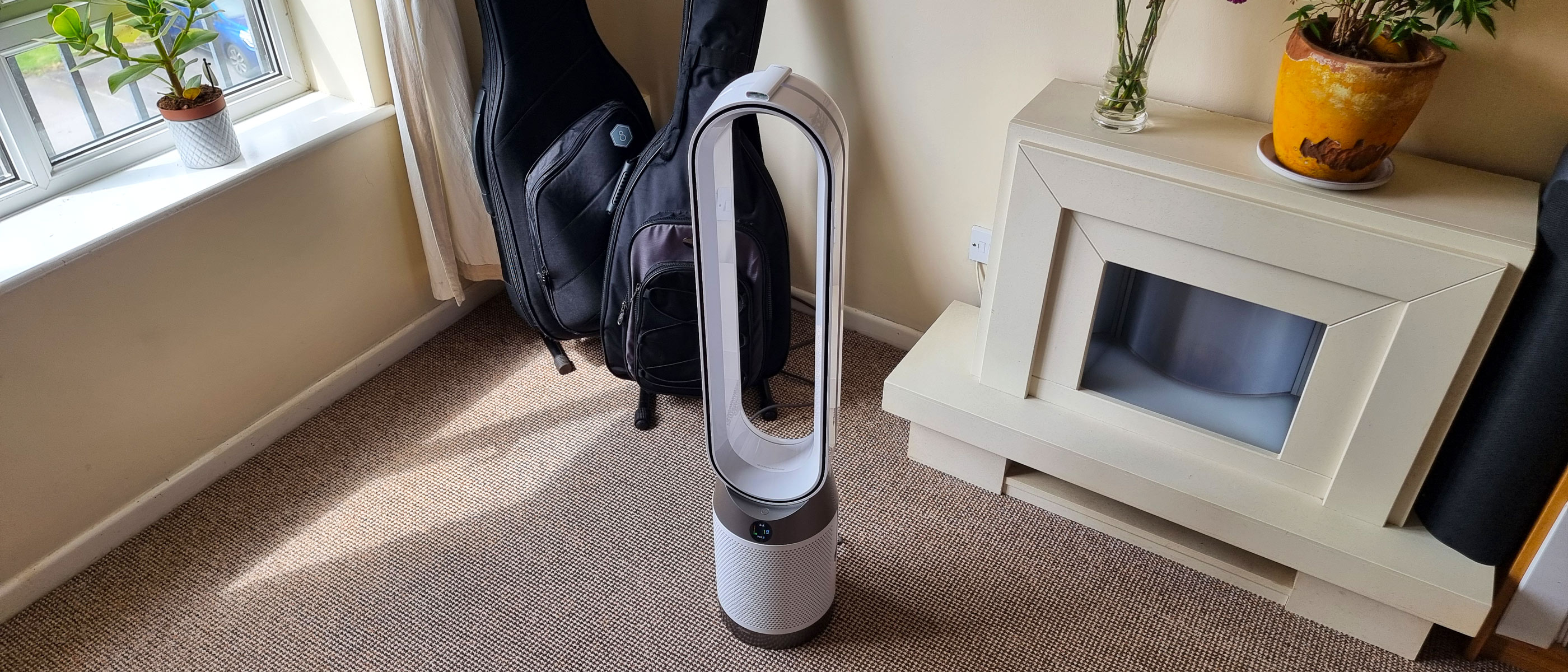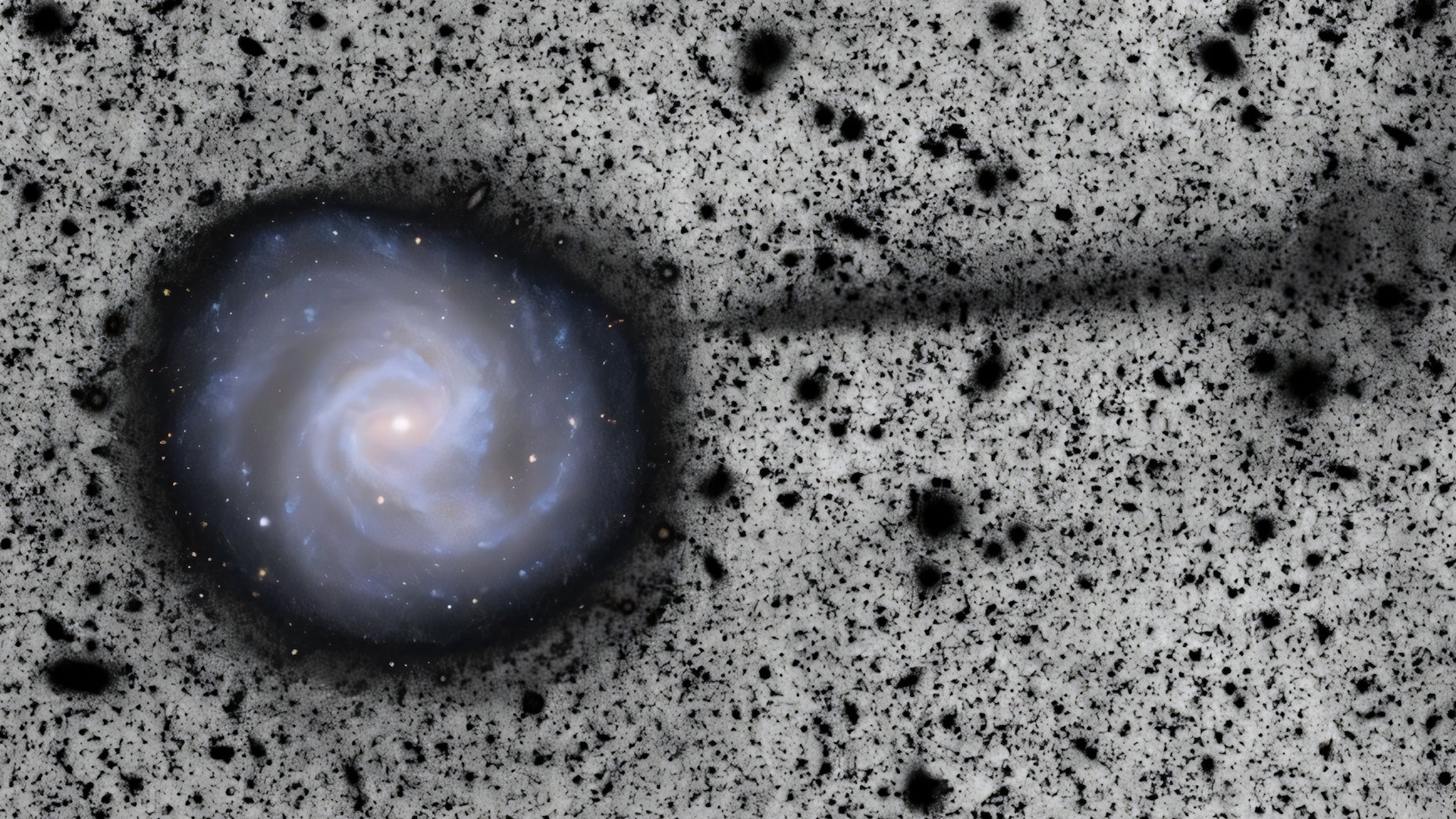Live Science Verdict
With its advanced air quality monitoring, quiet airflow and effective air filtration, the Dyson Purifier Cool PC1 (TP11) is a great option for the hot summer months. However, many cheaper fan-purifiers offer similar, if not better value.
Pros
- +
Doubles as a fan
- +
Fits in tight spaces
- +
Light and portable
- +
Detailed air quality monitoring
- +
Cheaper than other Dyson air purifiers
Cons
- -
Still relatively expensive
- -
Plastic, fragile build
- -
Available in white only
- -
Flimsy remote control
Why you can trust Live Science
We have tested enough Dyson air purifiers to know they are a force to be reckoned with. These top-shelf appliances continuously earn our approval with their advanced smart features and reliable performance, and we are big fans of their signature space-savvy, minimalist design. That said, we have always had one major gripe with Dyson air purifiers — their prohibitively expensive price tags.
However, it looks like our complaints have not gone unnoticed. The latest addition to the brand's line-up, the Dyson Purifier Cool PC1 (TP11), costs "just" $479.99/£449.99. While that is not particularly budget-friendly, it is still cheaper than many other Dyson fan-air purifier combos while professing the same (if not better) purification capabilities.
The Purifier Cool PC1 offers real-time air quality monitoring, adjustable 350-degree oscillation, two 360-degree HEPA+activated carbon air filters and stacks of smart features. Specs-wise, it is very similar to its coveted older sibling, the Purifier Cool TP07. It even has the potential to replace it as the best option for cooling in our guide to the best air purifiers. As you would expect, we were more than a little excited to test the Dyson Purifier Cool PC1.
Dyson Purifier Cool PC1 (TP11) review
Dyson Purifier Cool PC1 (TP11): Design
- Sleek, space-savvy design
- Fragile plastic build
- Light and easy to move around
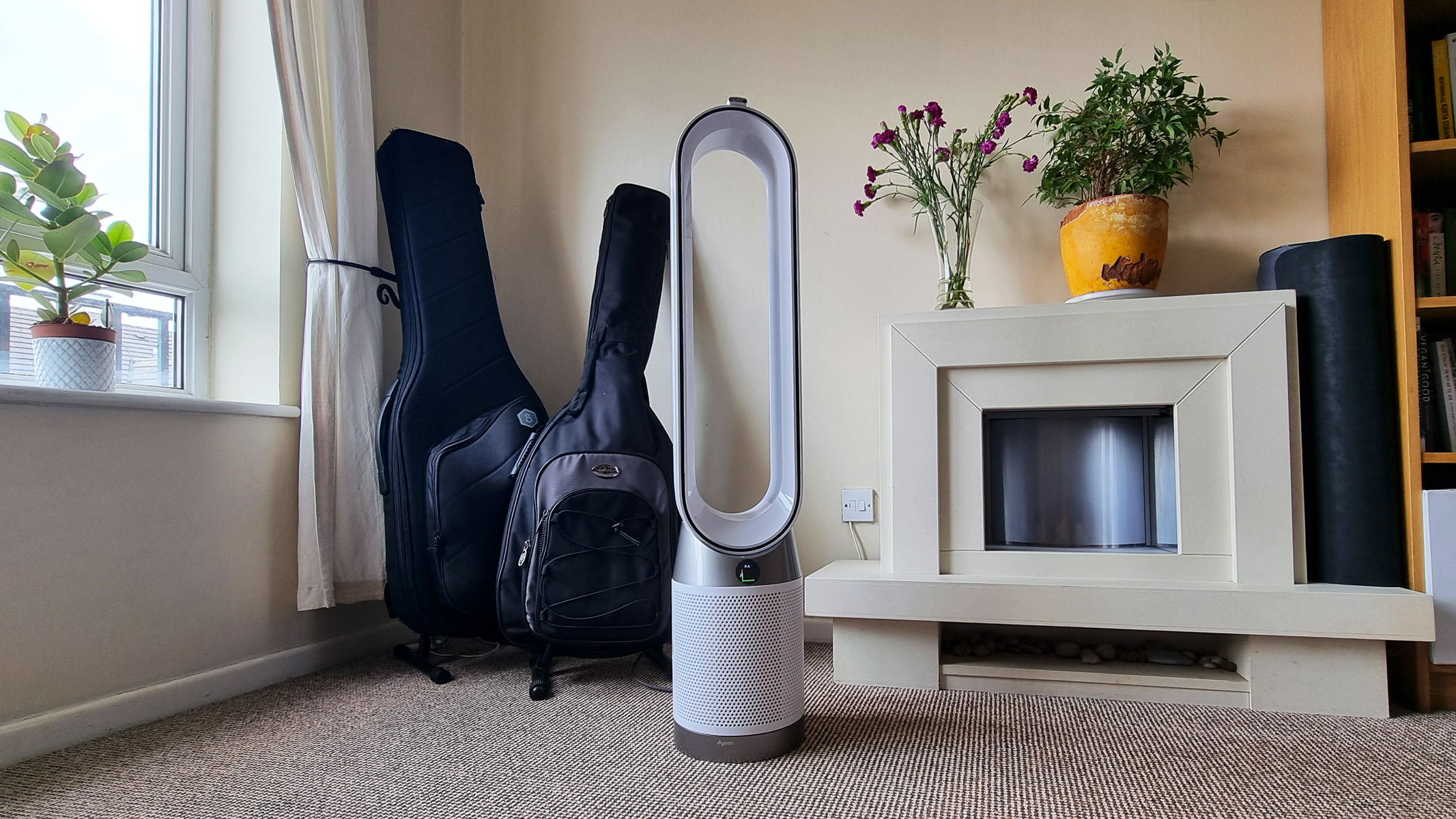
Energy Star-certified: Yes
Coverage: Up to 871.8 square feet (81 square meters)
CADR: Unstated
Filters: HEPA, activated carbon
Fan speeds: Ten
Auto mode: Yes
Max noise: 61.4 dB
Ionizer: No
Smart features: app and voice control
Dimensions (in): 8.66 x 8.66 x 41.34 (W x D x H)
Dimensions (cm): 22 x 22 x 105 (W x D x H)
Weight: 10.5 lbs (4.72 kg)
From a distance, the Dyson Purifier Cool PC1 looks just like many other Dyson appliances. It is sleek, modern-looking and small enough to fit into tight spaces. This air purifier measures just 8.66 inches (22 cm) in width and depth, so it is a great option for those with little floor space, and its neutral color scheme means it will blend in easily with various home decors. However, the initial enthusiasm wanes on closer inspection.
To start with, the Dyson Purifier Cool PC1 feels surprisingly fragile. Its frame and bladeless fans are made entirely of plastic, and while you could argue that many air purifiers are built this way, most of these appliances do not feel like they might fall apart at the earliest convenience. The air filter cover felt particularly flimsy — we had to be very careful not to damage its locking mechanism while changing the filter, for example. To make matters worse, the Dyson Purifier Cool PC1 feels surprisingly unstable. We can easily imagine it being tipped over by playful children or curious animals.

On the other hand, its flimsy build is what makes this air purifier exceptionally light and easy to move around. The Dyson Purifier Cool PC1 weighs only 10.5 lbs (4.72 kg), which is uncommon for an appliance this tall (41 in or 1 meter in height), and you can easily grab hold of it with just one hand. It also features a nearly 6-foot (1.8 m) cable, making it even more portable.
The control panel on the Dyson Purifier Cool PC1 is a mixed bag. It has just one button that switches the unit on and off, and a small LCD screen displaying basic information about the appliance. This air purifier is otherwise controlled entirely by the MyDyson app and a small remote control that can be magnetically attached to the top of the fan (more on that later). While this minimalist approach makes the PC1 look modern and elegant, it also makes it nearly impossible to control the appliance if you misplace the remote control or lose internet connection.
Get the world’s most fascinating discoveries delivered straight to your inbox.
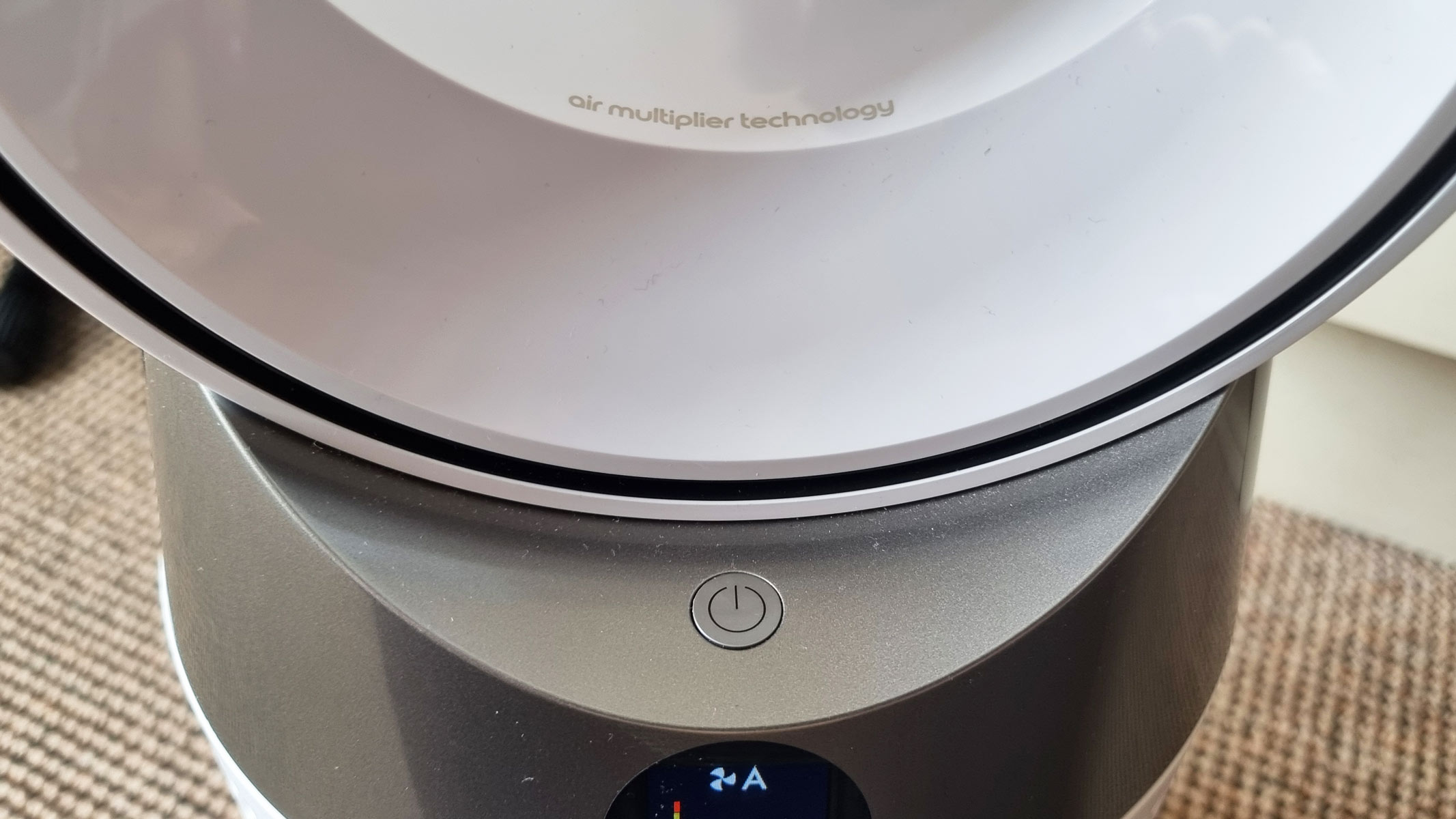
In addition, we were somewhat disappointed by the fact that the Dyson Purifier Cool PC1 is only available in white. Many Dyson purifiers come in different colors, making them more customizable, yet this one does not.
Lastly, the filter replacements. One 360-degree HEPA filter costs approximately $69.99 and lasts up to 12 months, depending on usage. That is not particularly cheap, but when you compare it to what the competitors offer, Dyson does give you a good run for your money.
Dyson Purifier Cool PC1 (TP11): Features
- Controlled via an app and a remote control
- Compatible with Amazon Alexa, Google Assistant and Siri
- 10 fan speeds, Auto mode and Night mode
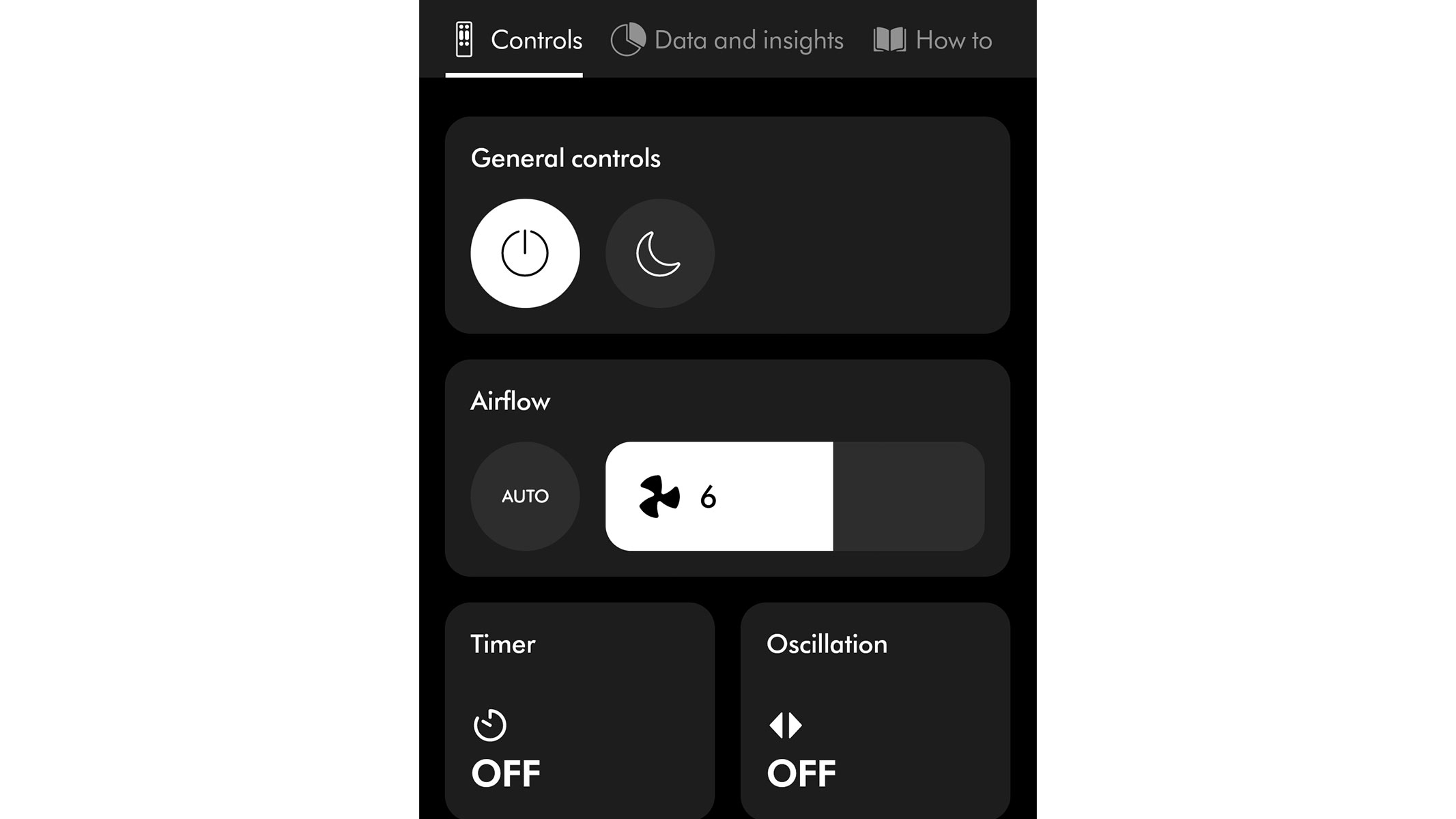
Features are where Dyson air purifiers shine, and the Purifier Cool PC1 is no exception. This model features 10 fan speeds, an Auto mode in which the fan speed is adjusted based on the air quality readings, and a Night mode in which the appliance operates in Auto mode with the quietest settings possible. The Purifier Cool PC1 can either stand still or oscillate through 45-, 90-, 180-, and 350-degree angles, and the operating timer can be scheduled in advance. All in all, this air purifier has a great selection of intensity settings and will keep the air cool exactly when and how you want it.
One of the best features of the Dyson Purifier Cool PC1 is its in-depth air quality monitoring. The MyDyson app displays both real-time and historical readings, breaking them down into general air quality, particles measuring 2.5 microns (such as pollen and certain mold spores) and particles measuring more than 10 microns (dust and hair strands, for example).
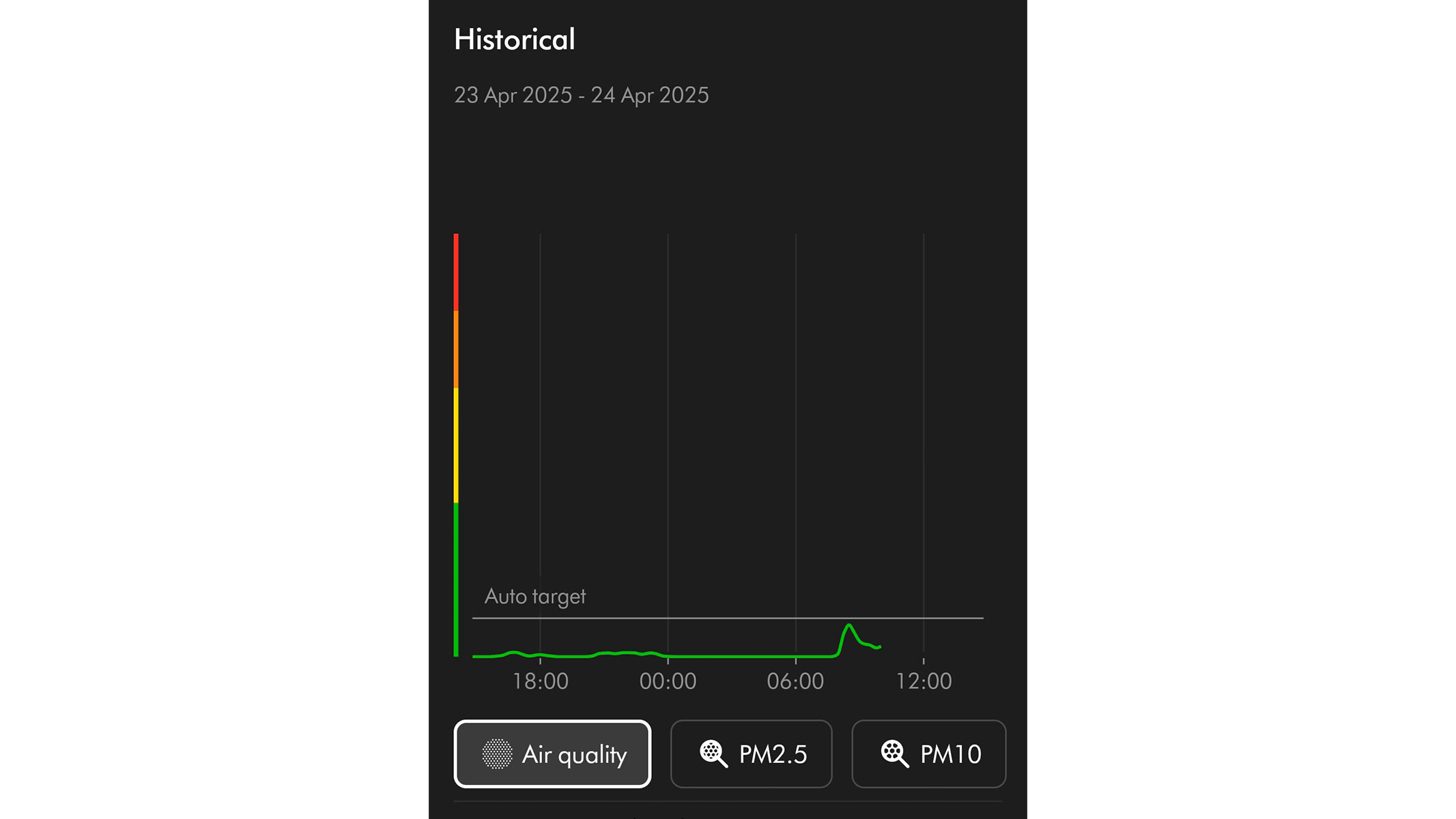
On top of that, it displays air quality data for your chosen location, so it allows you to quickly check the levels of air pollution outside of your home. The Purifier Cool PC1 may not be able to detect volatile organic compounds (VOCs), indoor temperature or other advanced stats like some of the more premium Dyson models, but it still offers excellent value in that regard.
Moreover, the Dyson Purifier Cool PC1 can be connected to compatible voice services, such as Amazon Alexa, Google Assistant and Siri. If you like your connected devices, this air purifier should not disappoint.
Dyson Purifier Cool PC1 (TP11): Performance
- Quiet at low fan speeds
- Airflow may not be powerful enough for some
- Good air-cleaning performance
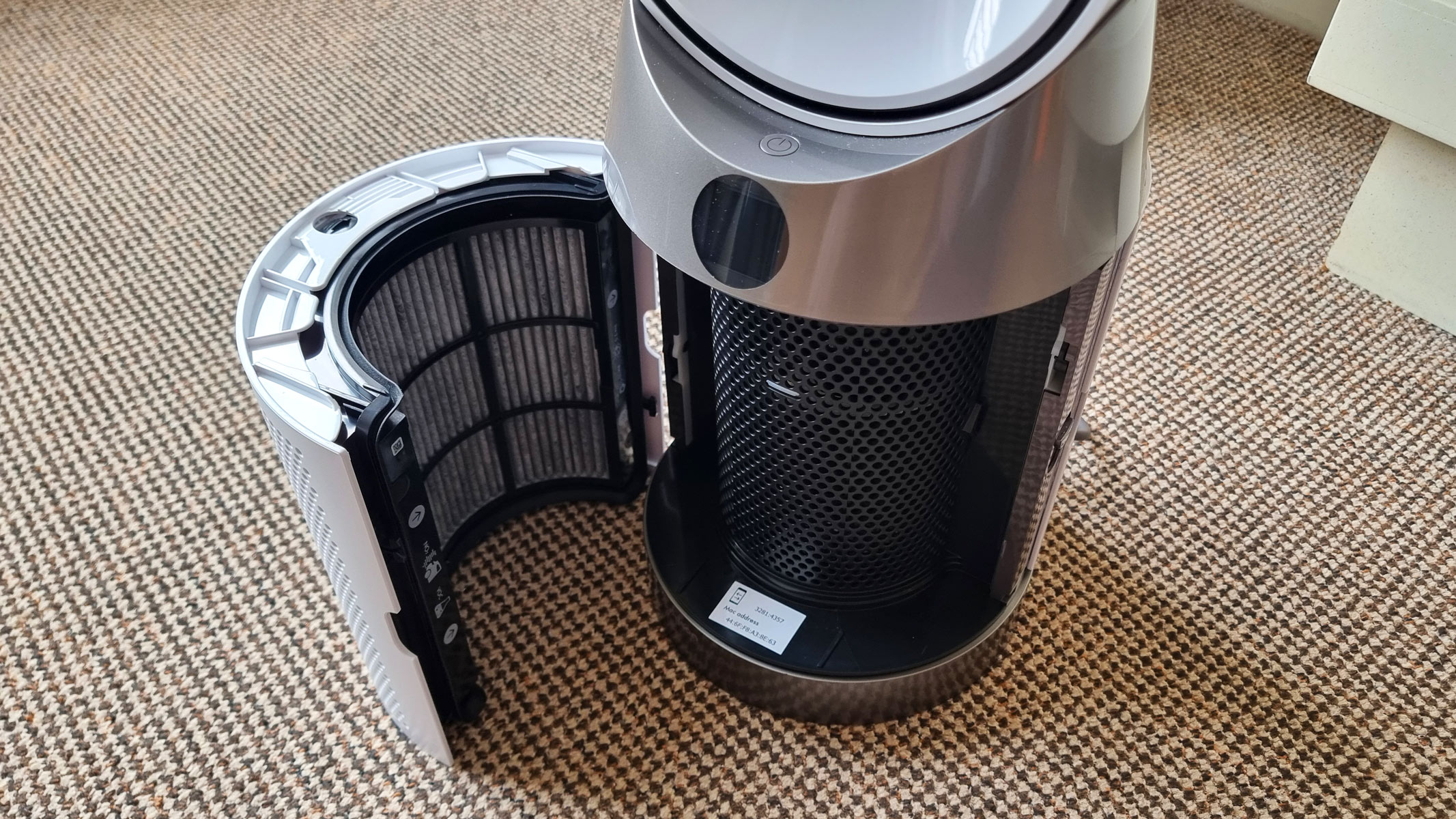
According to the manufacturer, the Dyson Purifier Cool PC1 is best suited for rooms measuring up to 871.8 square feet (81 square meters). However, we could not verify that claim.
The Clean Air Delivery Rate (CADR) for this appliance — an objective metric that refers to the volume of air that it can clean in a given time and space — was nowhere to be found. However, most Dyson fan-purifiers have a CADR of around 70 to 90 CFM (cubic feet per minute), and we would not expect this model to be any different. This means that, while the PC1 could theoretically cover a space of up to 871.8 square feet, it would be most effective in small- to medium-sized spaces (up to approximately 120 square feet.) But, as we said, we could not verify that.
Dyson also states that the Purifier Cool PC1 does not generate more than 61.4 dB, and we can confirm this statistic. We used the Sound Meter decibel-counting app to measure how loud this fan-air purifier was on different settings, and even at the highest fan speed, the Dyson Purifier Cool PC1 did not cross the stated threshold. When we measured its noise level at the lowest fan speed, we noted only 25 dB (equivalent to whisper or leaves rustling in a gentle breeze). This fan-air purifier appears to be slightly quieter than some of the other models we have tested. For example, the aforementioned Dyson TP07 generated up to 73 dB, making it as loud as a dishwasher.
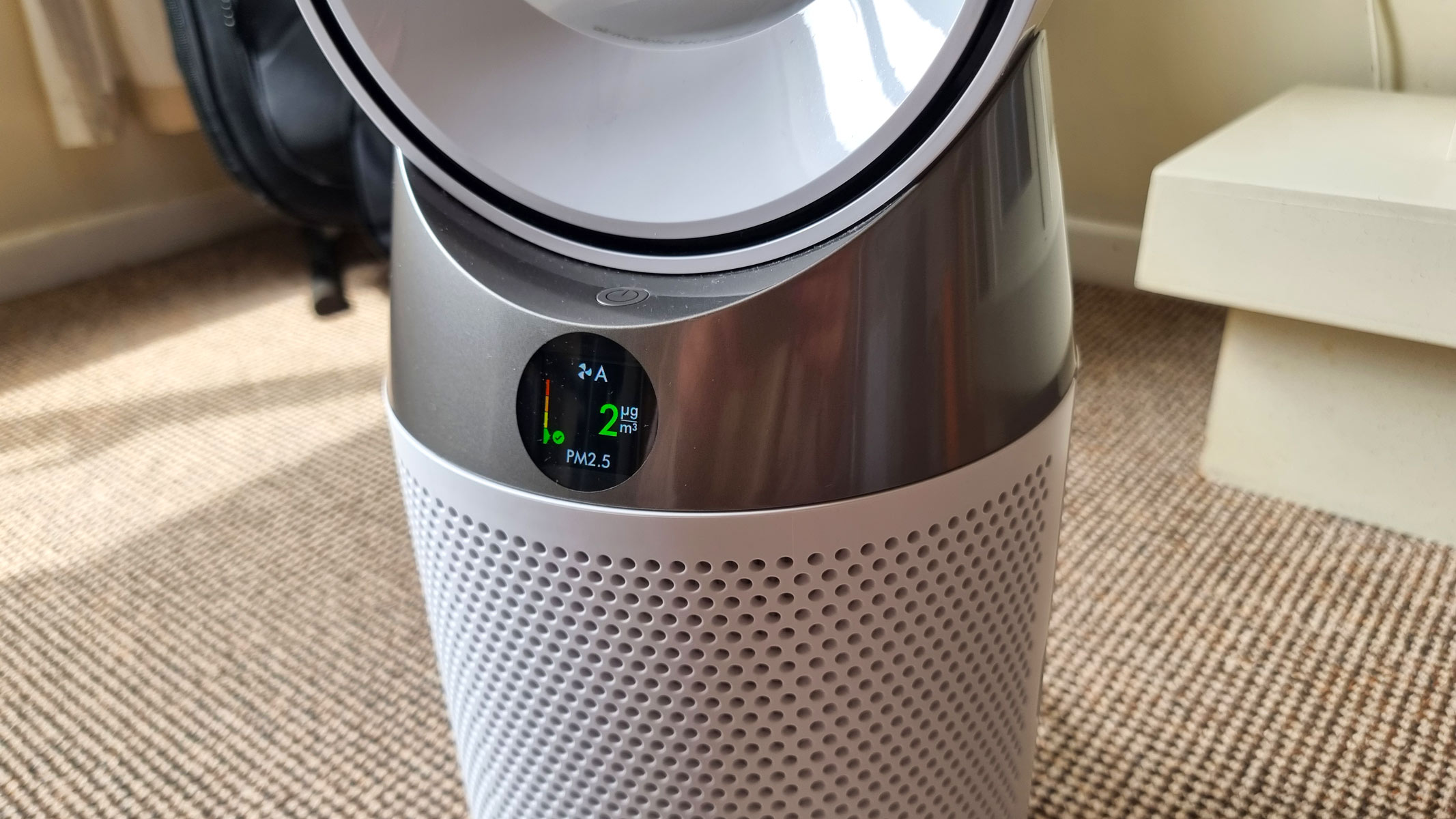
When it comes to day-to-day performance, the Dyson Purifier Cool PC1 did a relatively good job. Our testing period coincided with the hay fever season and this fan-air purifier appeared to make a tangible difference to our allergy symptoms. The air in our house seemed to smell fresher, too.
However, it is worth noting that this air purifier does not have a temperature sensor. The Dyson Purifier Cool PC1 reacted relatively quickly to changes in air pollution, but it had no means to regulate the ambient temperature. For a fan-type appliance, this is a huge oversight.
In addition, we found that the remote control works only if it is pointed directly towards the LCD screen. This was particularly annoying when the air purifier was oscillating — if we wanted to change the settings, we had to run around the appliance to find the perfect angle for the remote control to connect.
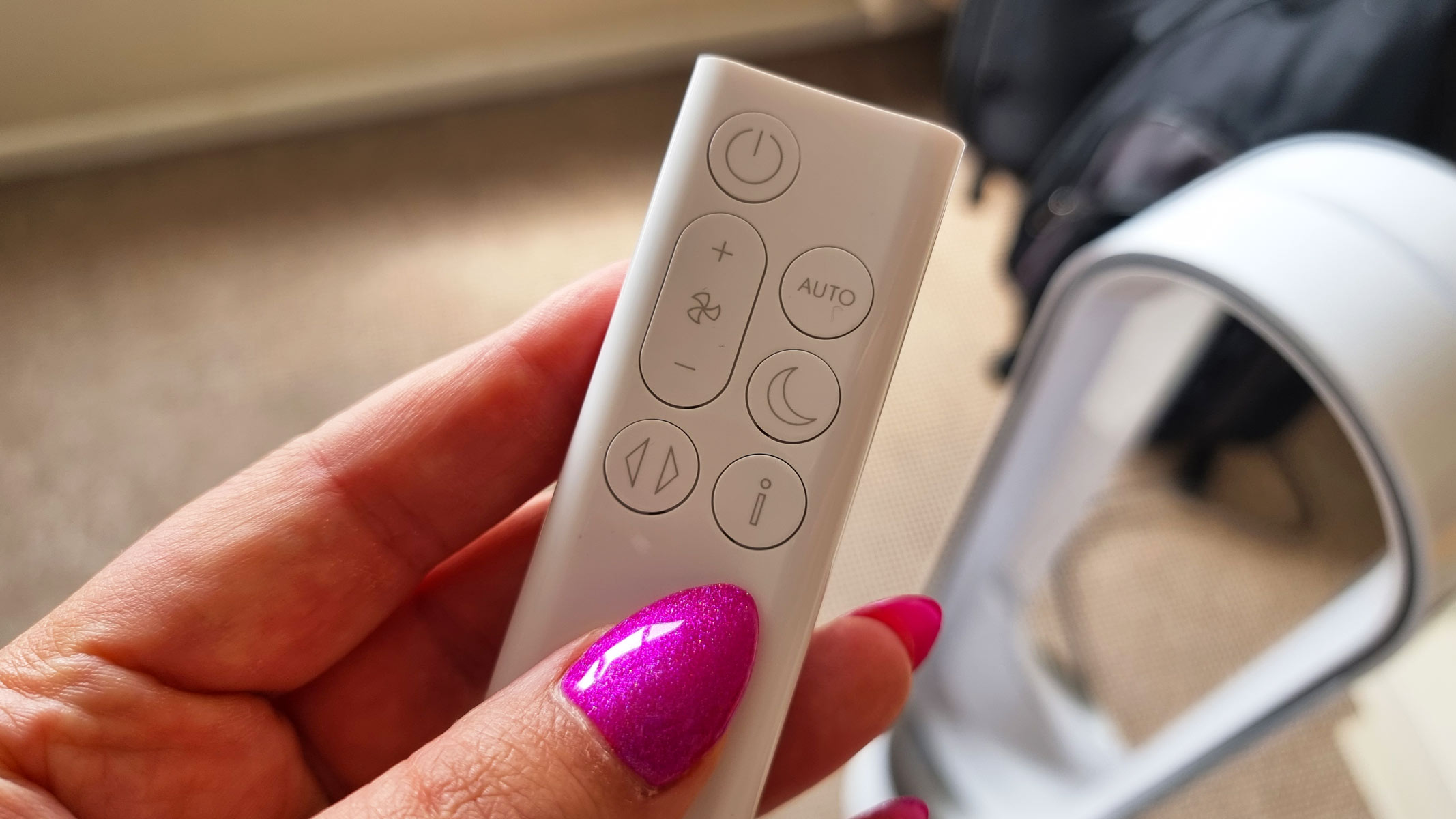
We were also slightly underwhelmed by its maximum fan speed. While we would not consider it weak, it may also not be powerful enough to combat very high temperatures. If you want airflow that can sweep you off your feet, the Dyson Purifier Cool PC1 may not be the best choice for you.
On the other hand, this fan-air purifier performed reasonably well in our air quality tests. First, we tested ambient air quality before and after running the Dyson Purifier Cool PC1 on Auto mode for 30 minutes in an enclosed, medium-sized room. We took measurements every 15 minutes using our trusted Perfect Prime air particle monitor, a professional-grade device capable of detecting airborne particles as small as 0.3 microns. We found that the Dyson Purifier Cool PC1 removed 67% of 0.3-micron particles and 79% of 2.5-micron particles (no 10-micron particles were detected at this stage). Considering that we conducted the test when the air quality was reasonably good, this is a considerable drop in air pollution.
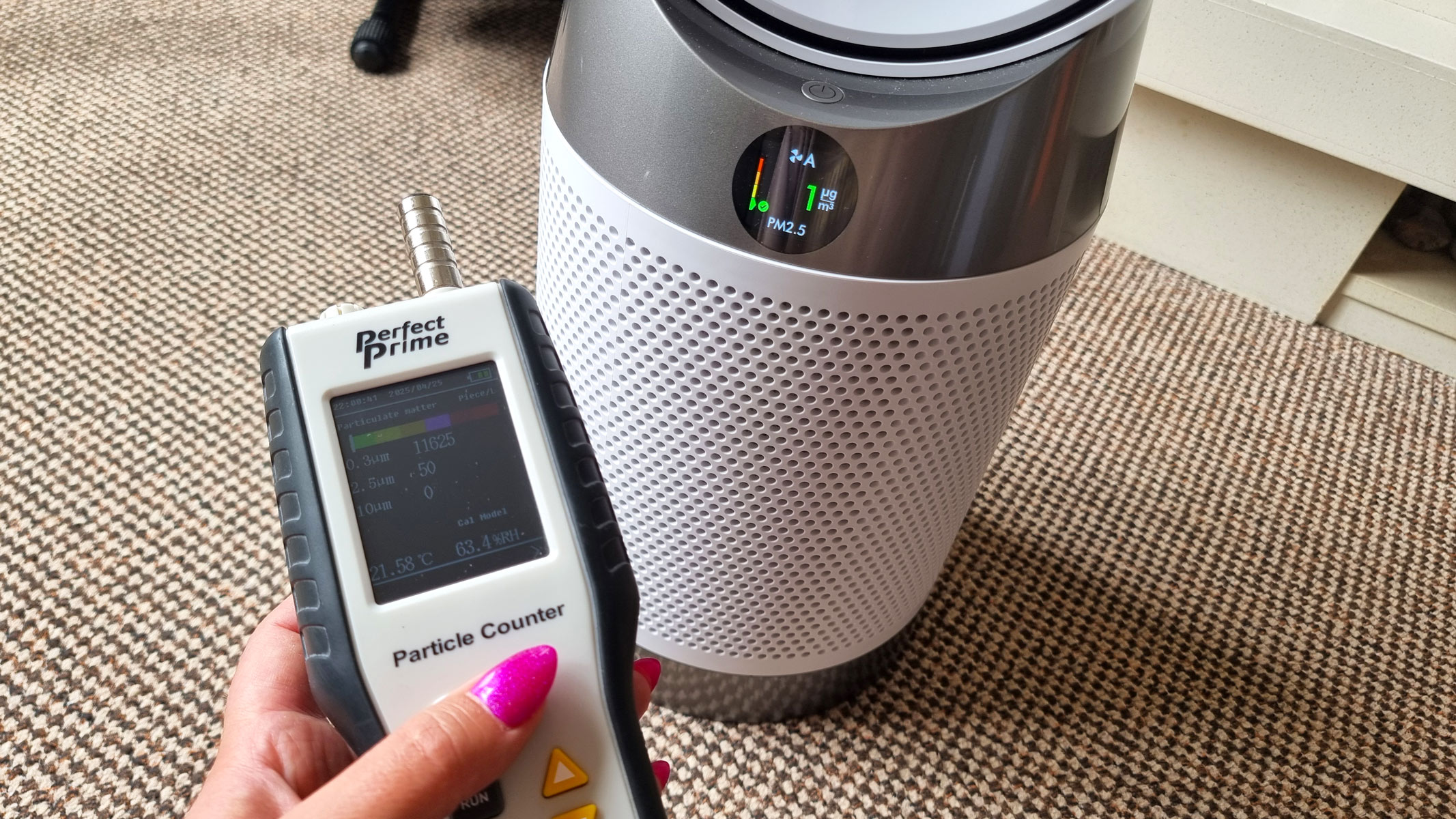
Then, we conducted several smoke tests. We burned incense sticks and matches to create different types of smoke, then ran the fan-air purifier on different settings. The results were relatively similar between Auto mode and the highest fan speed. After 15 minutes, the Dyson Purifier Cool PC1 removed on average 69% of particles measuring 0.3 microns, 74% of 2.5-micron particles and 89% of pollutants larger than 10 microns. After 30 minutes, these values rose to 87%, 91% and 96%, respectively.
While these results are relatively good, plenty of other air purifiers we have tested appeared to be better at removing smoke. However, that is presumably because they had a much higher CADR than our Dyson Purifier Cool PC1. So, while we would not recommend this air purifier for heavily polluted areas, it is likely that it will still do a good job in typical residential settings.
Dyson Purifier Cool PC1 (TP11): User reviews
At the time of writing this review, the Dyson Purifier Cool PC1 (TP11) had only just been released in the U.K., so there were not enough user reviews available yet. However, the initial testimonials on the Dyson U.K. website were overwhelmingly positive, with buyers giving it on average 4.6 out of 5 stars. Some reviews even praised this air purifier for its pivotal role in managing their respiratory conditions.
As one user said, "I live on a high-traffic street and have had dust and other pollution on a daily basis for as long as I have lived here. In the four days of using the Dyson air purifier, I have noticed a marked difference in the quality of the air and the coolness of the room. I am an asthmatic and often struggle with my chest throughout the day and night, often taking my steroid reliever because of this. Unexpectedly, in the last few days, I have done this less and I truly believe it is due to the effectiveness of the Dyson purifier. [...] Great product!"
Should you buy the Dyson Purifier Cool PC1 (TP11)?
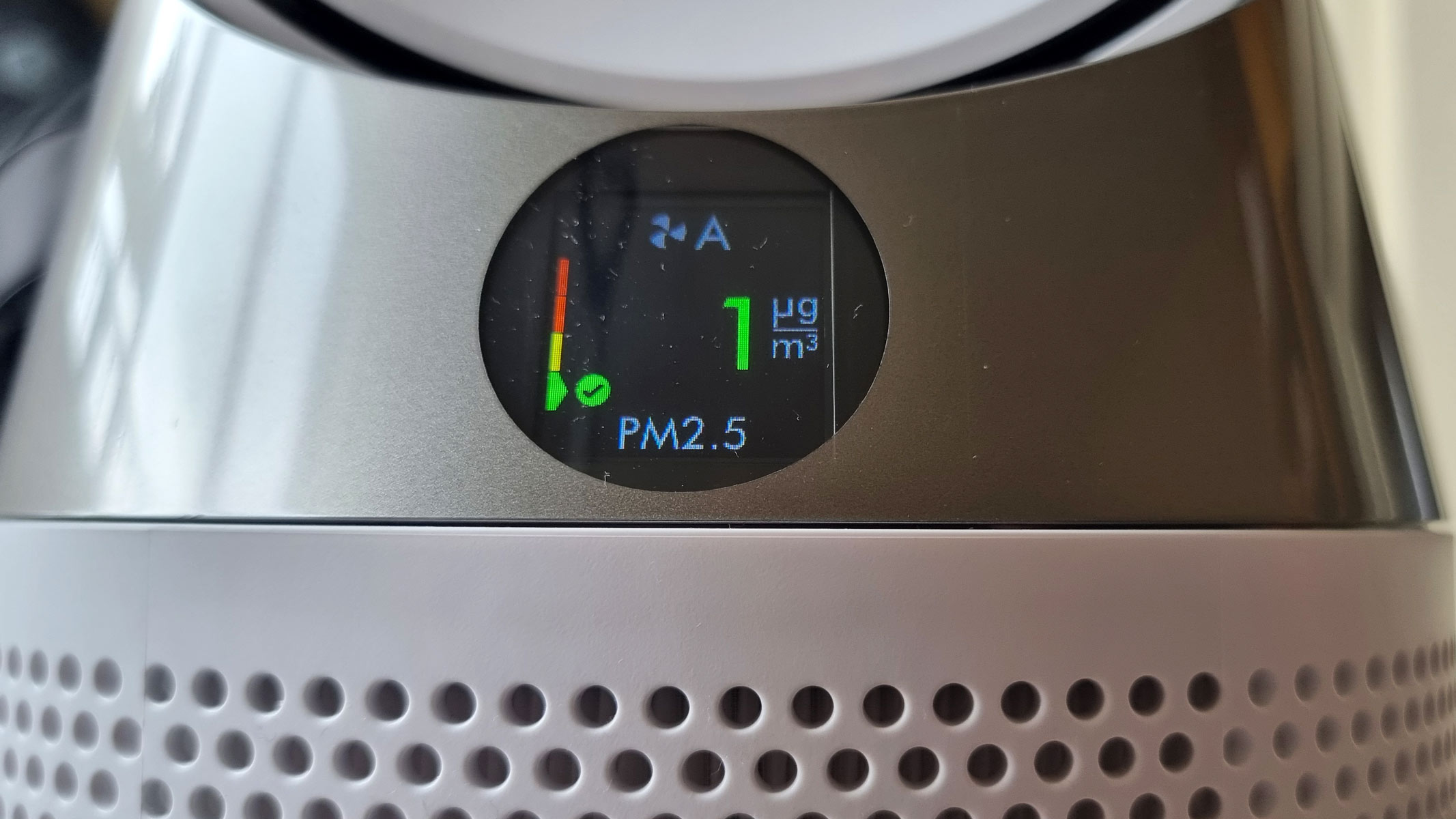
✅ Buy it if: You want an efficient fan-air purifier with stacks of smart features and in-depth air quality monitoring. The Dyson Purifier Cool PC1 does a great job of cooling and cleaning the indoor air without making much noise or taking up loads of space. Plus, it is cheaper than many other Dyson fan-air purifiers.
❌ Do not buy it if: You are looking for an affordable fan-purifier or want to prioritize cooling over air cleaning. There is plenty to like about the Dyson Purifier Cool PC1, but it is not durable or robust enough to justify its high price, and its airflow may not be powerful enough to combat very hot temperatures.
If the Dyson Purifier Cool PC1 (TP11) is not for you
If the Dyson Purifier Cool PC1 is too expensive for you, consider the Dreo MC710S. This fan-air purifier has just as many smart features, but offers a slightly more powerful airflow and costs around $200 less. However, it is heavier and less portable, and its air-cleaning performance may not be as efficient.
Looking for something more advanced and winter-friendly? Then the Dyson Purifier Hot + Cool Formaldehyde is a great alternative here. This fan-heater-purifier combo features a catalytic filter that can remove formaldehyde, a strong-smelling chemical often found in household products like paints and varnishes. However, it is almost twice as expensive as the Dyson Purifier Cool PC1.
Not bothered about cooling features? Then we would recommend the Levoit Core 400S. This high-performing air purifier is perfect for small- to medium-sized rooms, and it comes with smart features that can easily compete with Dyson's offerings.
Dyson Purifier Cool PC1 (TP11): How we tested
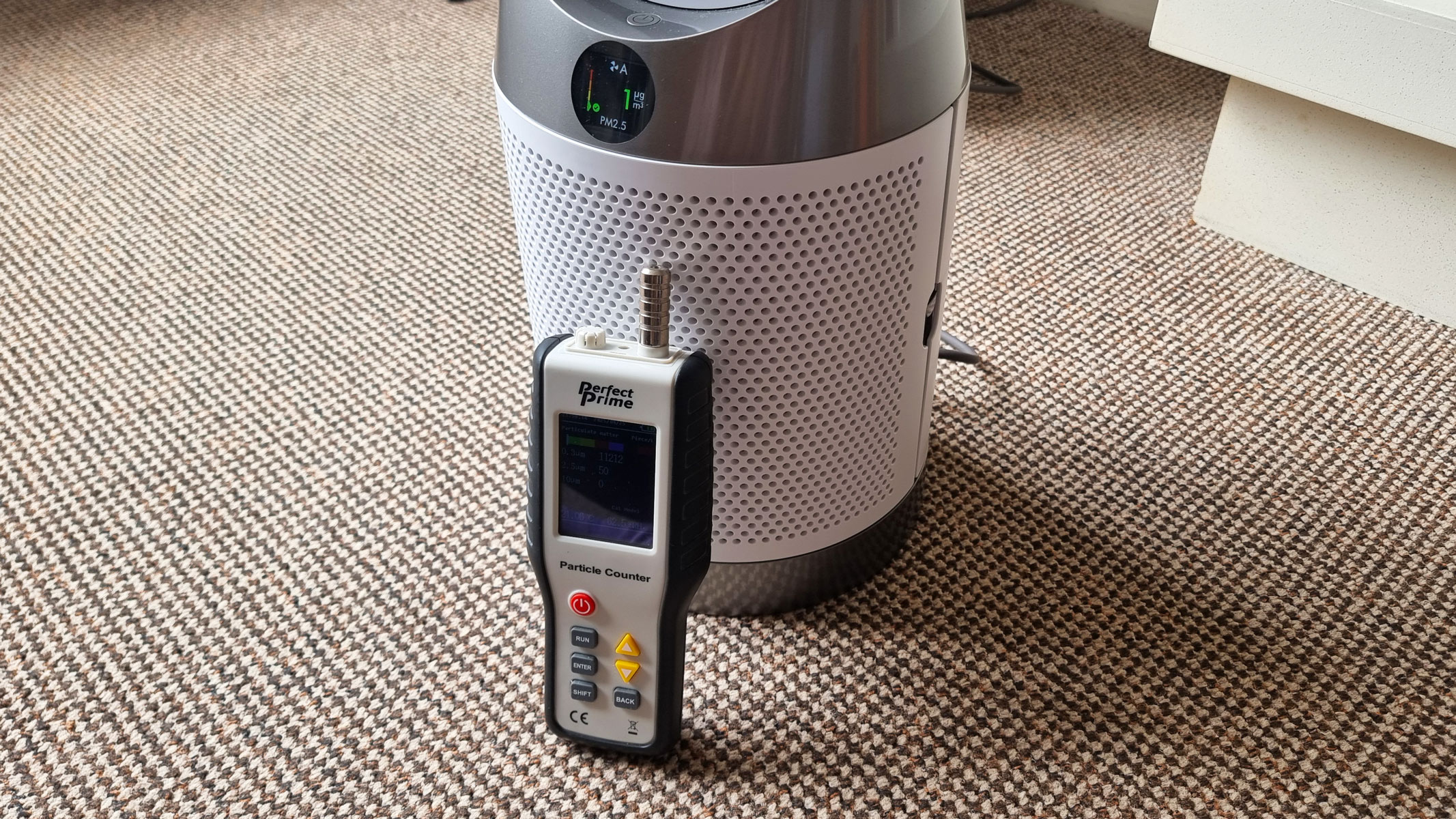
We spent nearly a month testing the Dyson Purifier Cool PC1, rigorously assessing its design, features, day-to-day performance, airflow customization and connectivity with third-party devices. We also used the Sound Meter decibel-counting app to measure how loud this fan-air purifier was on different settings.
Then, we conducted a series of air quality tests using a Perfect Prime air particle monitor, a professional-grade device capable of detecting airborne particles as small as 0.3 microns. We started with ambient air quality tests: first, we put the Dyson Purifier Cool PC1 in an enclosed room and ran it on Auto mode for 30 minutes, without oscillation, taking air quality readings every 15 minutes.
Next, we performed several smoke tests. We burned matches and incense sticks to create different types of heavy pollution, then measured the changes in air quality before and after running the Dyson Purifier Cool PC1 for 30 minutes without oscillation. The smoke tests were first conducted on Auto mode, then at the highest fan speed.

Anna Gora is a health writer at Live Science, having previously worked across Coach, Fit&Well, T3, TechRadar and Tom's Guide. She is a certified personal trainer, nutritionist and health coach with nearly 10 years of professional experience. Anna holds a Bachelor's degree in Nutrition from the Warsaw University of Life Sciences, a Master’s degree in Nutrition, Physical Activity & Public Health from the University of Bristol, as well as various health coaching certificates. She is passionate about empowering people to live a healthy lifestyle and promoting the benefits of a plant-based diet.
You must confirm your public display name before commenting
Please logout and then login again, you will then be prompted to enter your display name.
